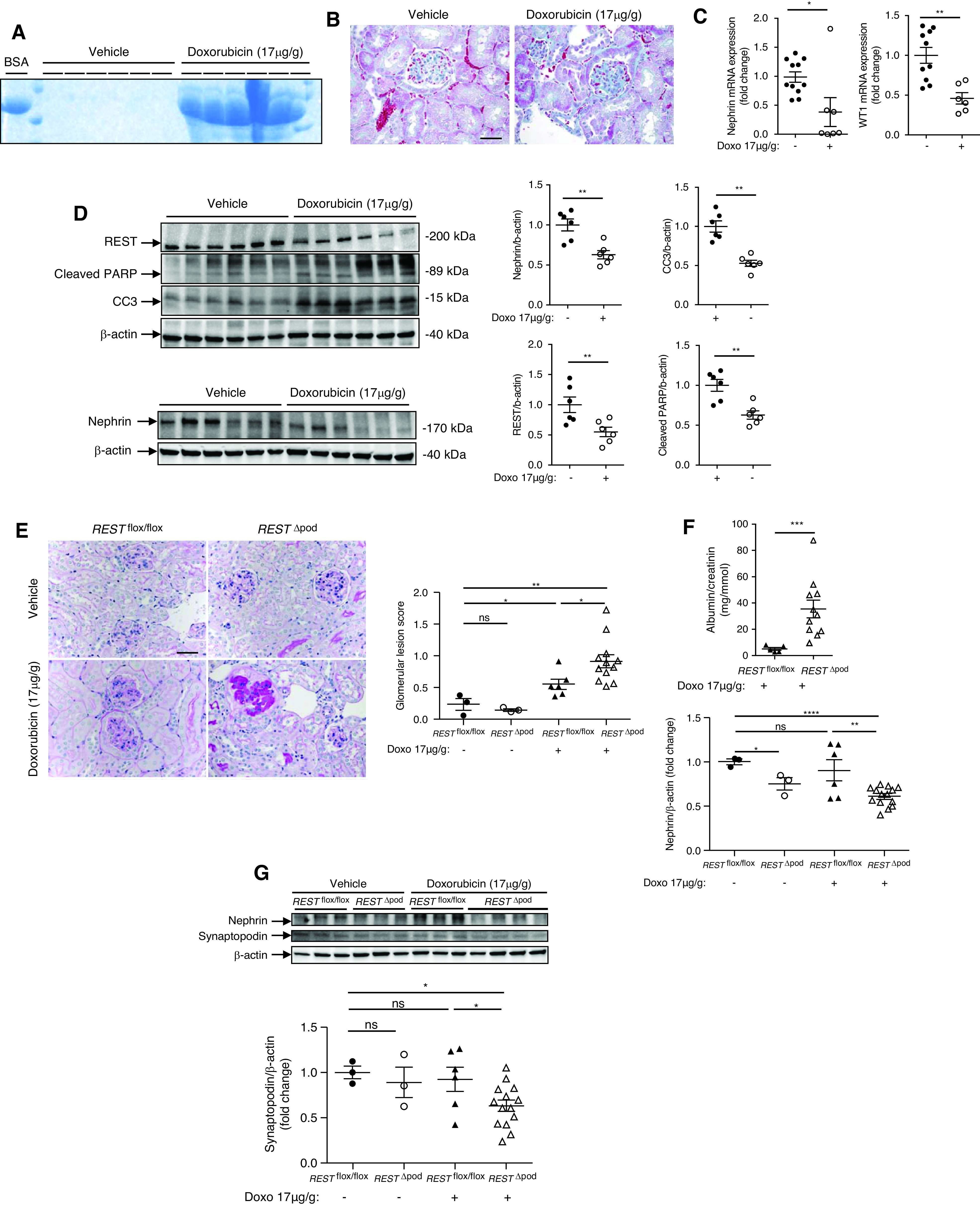Figure 5.

REST protects against doxorubicin-induced nephropathy. (A) Representative urine Coomassie blue staining 7 days after venous retro-orbital injection of either vehicle or a single dose of 17 μg/g of doxorubicin in BALB/c WT mice. BSA is shown as a positive control. (B) Trichrome staining of the kidneys 7 days after retro-orbital injection of either vehicle (n=6) or a single dose of 17 μg/g of doxorubicin into Balb/c WT mice. Scale bar, 10 μm. (C) Nephrin and WT1 mRNA in the kidneys of mice injected with either vehicle or a single dose of 17 μg/g of doxorubicin. (D) Western blot (left) and quantification (right) of REST cleaved PARP, cleaved caspase-3 (CC3) (top blot), and nephrin (lower) 7 days after injection of either vehicle or a single dose of 17 μg/g of doxorubicin. (E) Periodic acid–Schiff staining (left) and quantitative analysis of glomerular lesion scores (right) in kidneys of C57bl/6 RESTflox/flox and RESTΔpod mice, 3 months after injection of either vehicle or a single dose of doxorubicin (17 μg/g). At the time of sacrifice, the kidneys of vehicle-injected mice and RESTflox/flox mice injected with doxorubicin had no obvious abnormal histology, whereas RESTΔpod mice injected with doxorubicin exhibited glomerular lesions with glomerulosclerosis, tubular vacuolization and intratubular casts. Scale bar, 10 μm. (F) RESTΔpod mice injected with doxorubicin displayed albuminuria compared with doxorubicin treated RESTflox/flox mice. (G) Western blot (upper panel) and quantification of nephrin and synaptopodin (lower panels) in C57bl/6 RESTflox/flox and RESTΔpod mice, injected with either vehicle or a single dose of doxorubicin (17 μg/g). *P<0.05, **P<0.01, ***P<0.001, ***P<0.0001 between groups, ANOVA, and post-hoc Tukey–Kramer test were used.
